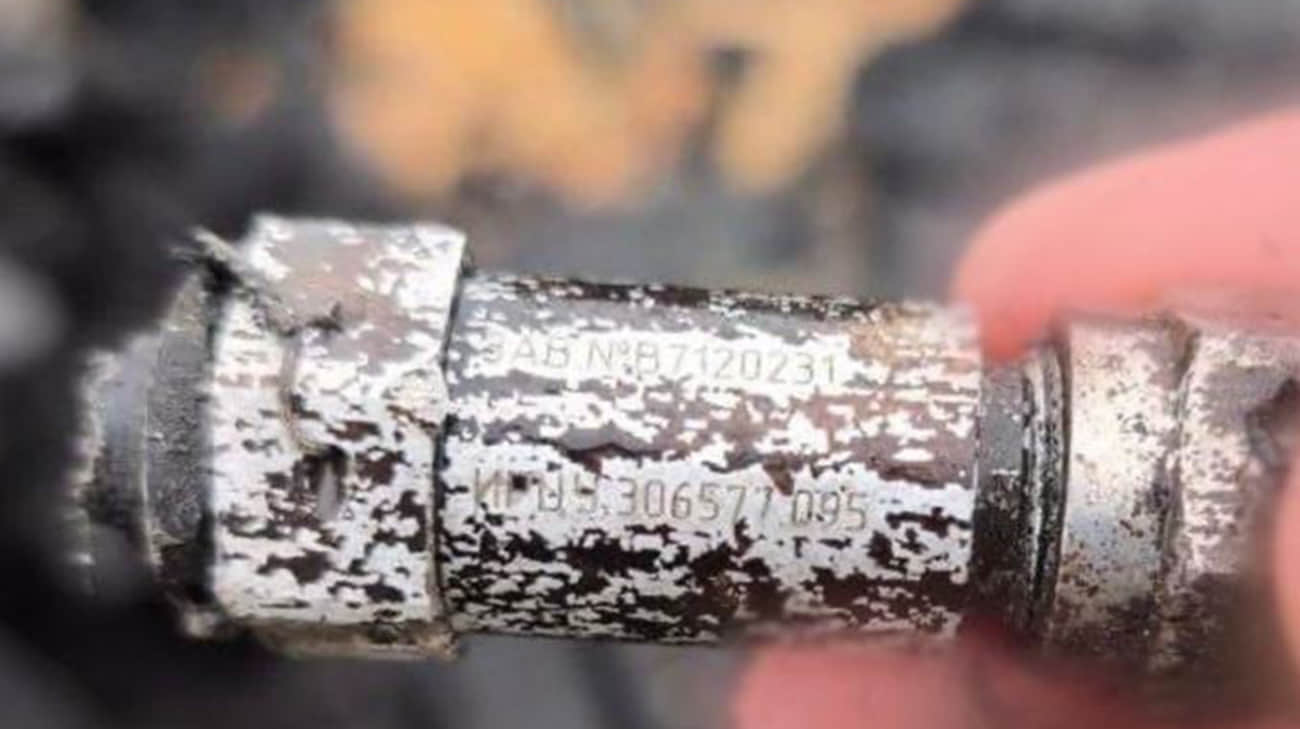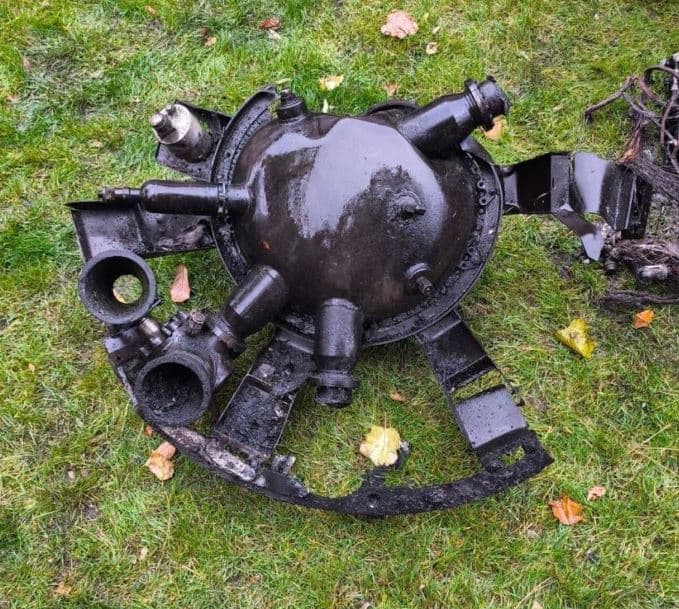CNN publishes photos of debris from new Russian missile possibly used in Dnipro attack – photo
CNN has obtained photos from a source within Ukraine's security forces that reportedly show wreckage of the missile used by Russian forces in the attack on Dnipro on 21 November. Source: CNN; Agentstvo, a Russian analytical outlet; journalist Mark Krutov on Х (formerly Twitter) Quote: "A Ukrainian security source provided photos of the debris from the attack on Dnipro city.

CNN has obtained photos from a source within Ukraine's security forces that reportedly show wreckage of the missile used by Russian forces in the attack on Dnipro on 21 November.
Source: CNN; Agentstvo, a Russian analytical outlet; journalist Mark Krutov on Х (formerly Twitter)
Quote: "A Ukrainian security source provided photos of the debris from the attack on Dnipro city. Kyiv has accused Russia of firing an intercontinental ballistic missile (ICBM) at Ukraine, which would likely mark the first time Moscow had used such a weapon in more than 1,000 days of war.
The fragments pictured do not necessarily all belong to one missile, the source said."

Details: An unnamed Western official has reportedly questioned whether the missile involved was an intercontinental ballistic missile. CNN has reached out to weapons experts to review the photos and provide an independent analysis of the missile's type.
Agentstvo reported that the wreckage recovered from the impact site of the missile – touted by Russian President Vladimir Putin as a cutting-edge innovation of Russia’s defence industry – include a component from the Bulava missile.
"Serial production of this missile began in the late 2000s, suggesting that the missile used by the Russian military on Thursday may not feature the advanced technologies Putin claimed in his video address," analysts observe.
Mark Krutov, a journalist for Radio Liberty, identified serial numbers on one of the components, which led him to a 2013 government procurement contract. This contract detailed the preparation of technical documentation for producing parts for the ZK-30 system, another designation for the R-30 Bulava intercontinental ballistic missile.
The Bulava missile is hardly a new addition to Russia's arsenal. Development started in the 1990s, test launches occurred in 2005, mass production began in 2007, and it was officially deployed in 2012. The presence of Bulava components in what was claimed to be a "state-of-the-art" missile raises doubts about whether it genuinely incorporates cutting-edge technologies.
Background:
- Ukraine’s Air Force reported that Russia used an intercontinental ballistic missile during the latest missile attack on the city of Dnipro.
- Ukrainska Pravda sources reported that it could have been a Rubezh missile, a potential carrier of nuclear warheads.
- However, Western sources argued that it was, in fact, an "experimental medium-range ballistic missile".
- The Kremlin's leader, Vladimir Putin, effectively confirmed US intelligence in his address on Thursday, stating that during the morning attack on Dnipro on 21 November, Russia used an Oreshnik medium-range missile.
- The United States has officially confirmed that Russia struck Dnipro on the morning of 21 November with a ballistic missile developed from an RS-26 Rubezh intercontinental ballistic missile.
Support UP or become our patron!


